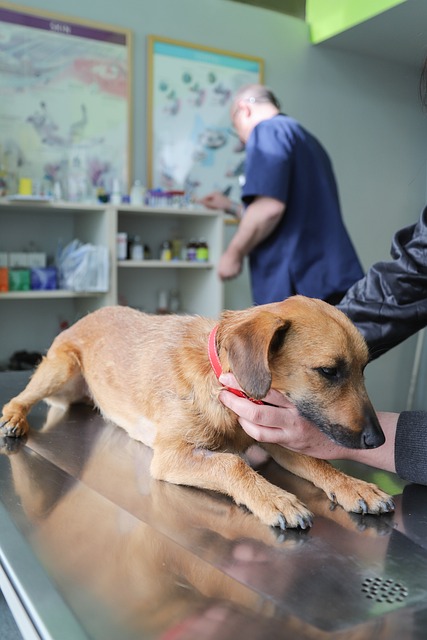Diabetes is a serious condition that affects the ability of the body to produce or use insulin, a hormone that regulates blood sugar levels. Diabetes can cause various health problems for dogs, such as increased thirst, urination, appetite, weight loss, cataracts, infections, and nerve damage. Diabetes can also shorten the lifespan of dogs and reduce their quality of life.
Fortunately, there are some ways to prevent and treat diabetes in dogs, or at least manage its symptoms and complications. Here are some tips to help you keep your dog away from diabetes.
1. Ensure your dog has a healthy weight
Obesity is the most common contributing factor to the development of diabetes in dogs. Excessive fat can interfere with the function of insulin and make the body more resistant to it. Diabetes can be prevented by keeping your dog at a healthy weight. You can check your dog’s body condition score to see if they are overweight or obese. You can also consult your veterinarian for the ideal weight range for your dog’s breed, age, and size.
2. Feed your dog a balanced and high-quality diet
The type and amount of food you feed your dog can affect their blood sugar levels and insulin sensitivity. Your veterinarian can recommend the best type of diet for your diabetic dog⁵. Usually, this will include some combination of high-quality protein, complex carbohydrates, fiber, and healthy fats. Avoid feeding your dog foods that are high in sugar, simple carbohydrates, or fat. This can spike their blood sugar levels and increase their risk of pancreatitis, a condition that can damage the pancreas and cause diabetes. Also, avoid giving your dog human foods, table scraps, or treats that are not suitable for them.
3. Control your dog’s portions and feeding times
Besides the quality of food, the quantity and frequency of food can also affect your dog’s blood sugar levels and insulin needs. It is important to feed your dog the right amount of food for their weight and activity level and to measure their portions carefully. You can use a measuring cup or a scale to ensure accuracy. It is also important to feed your dog at regular intervals, preferably twice a day, and at the same time every day. This can help avoid sudden spikes or drops in glucose levels and make it easier to monitor and adjust their insulin dosage if needed.
4. Ensure your dog has regular exercise
Exercise can help your dog burn calories, maintain a healthy weight, and improve their insulin sensitivity. Exercise can also lower their blood sugar levels and reduce their need for insulin. However, exercise can also cause hypoglycemia, or low blood sugar, if your dog is not properly fed or medicated. Therefore, it is important to consult your veterinarian about the type, duration, and intensity of exercise that is suitable for your dog. In addition, it is important to monitor their blood sugar levels before and after exercise. You can also carry some glucose sources, such as honey or corn syrup, in case your dog shows signs of hypoglycemia, such as weakness, confusion, or seizures.
5. Spay your female dog
It is a research-backed fact that intact female dogs are at a greater risk of diabetes than their spayed counterparts¹. This is because female hormones, such as estrogen and progesterone, can interfere with the action of insulin and make the body more resistant to it. Spaying your female dog can eliminate this risk factor and also prevent other health problems, such as uterine infections, mammary tumors, and unwanted pregnancies.
6. Take your dog for regular checkups
Regular veterinary visits can help detect and diagnose diabetes in your dog early before it causes irreversible damage or complications. Your veterinarian can perform various tests, such as blood tests, urine tests, and physical exams, to check your dog’s blood sugar levels, kidney function, and overall health. Your veterinarian can also prescribe and adjust appropriate insulin therapy for your dog, and teach you how to administer it safely and effectively. Insulin injections are the most common and effective way to treat diabetes in dogs. They are usually given twice a day, under the skin, at the same time as feeding.
7. Manage your dog’s underlying health conditions
Some health conditions can predispose your dog to diabetes or worsen their condition if they already have it. For example, pancreatitis, a condition that causes inflammation of the pancreas, can damage insulin-producing cells and lead to diabetes. Other conditions, such as Cushing’s disease, hypothyroidism, or infections, can affect the metabolism and immune system of your dog. This can make them more resistant to insulin or prone to complications. Therefore, it is important to manage your dog’s underlying health conditions and follow your veterinarian’s advice on medication, diet, and lifestyle changes.
8. Monitor your dog’s blood sugar levels and signs of diabetes
Regular monitoring of your dog’s blood sugar levels can help you and your veterinarian evaluate the effectiveness of their treatment and adjust it as needed. You can use a glucometer, a device that measures blood sugar from a small drop of blood, to check your dog’s blood sugar levels at home. You can also use urine test strips, which measure the presence of glucose and ketones in the urine, to screen for diabetes or ketoacidosis, a potentially life-threatening complication of diabetes. However, these methods are not as accurate or reliable as blood tests, and they should not replace veterinary visits. You should also monitor your dog’s signs of diabetes, such as thirst, urination, appetite, weight, energy, and vision, and report any changes or concerns to your veterinarian.
9. Seek veterinary attention if your dog shows signs of complications.
Diabetes can cause various complications for dogs, such as cataracts, kidney disease, nerve damage, infections, and ketoacidosis. These complications can be serious and even fatal if left untreated. Therefore, you should seek veterinary attention if your dog shows any signs of complications, such as:
- Cloudy or bluish eyes, or blindness
- Enlarged liver or abdomen
- Frequent or persistent infections, especially of the skin or urinary tract
- Weakness, lethargy, or depression
- Seizures, tremors, or abnormal behavior
- Rapid breathing, dehydration, vomiting, or diarrhea
Your veterinarian can diagnose and treat the complications of diabetes in your dog, and provide you with the necessary guidance and support.
10. Provide your dog with love and care
Diabetes can be a challenging condition to manage for both you and your dog, but it does not mean that your dog cannot live a happy and fulfilling life. With proper treatment and care, your dog can still enjoy their favorite activities, bond with you and other pets, and have a good quality of life. You can provide your dog with love and care by:
Follow your veterinarian’s instructions and recommendations on medication, diet, exercise, and monitoring
- Provide your dog with a comfortable and stress-free environment
- Groom your dog regularly and check for any signs of infection or injury
- Playing with your dog and providing them with mental stimulation and enrichment
- Reward your dog with praise, affection, and healthy treats
- Seek support from other pet owners, online communities, or professional counselors if you feel overwhelmed or stressed.
Conclusion
Diabetes is a serious but manageable condition in dogs. By following these tips, you can help prevent and treat diabetes in your dog, or at least manage its symptoms and complications. You can also help your dog live a long and happy life with you.




